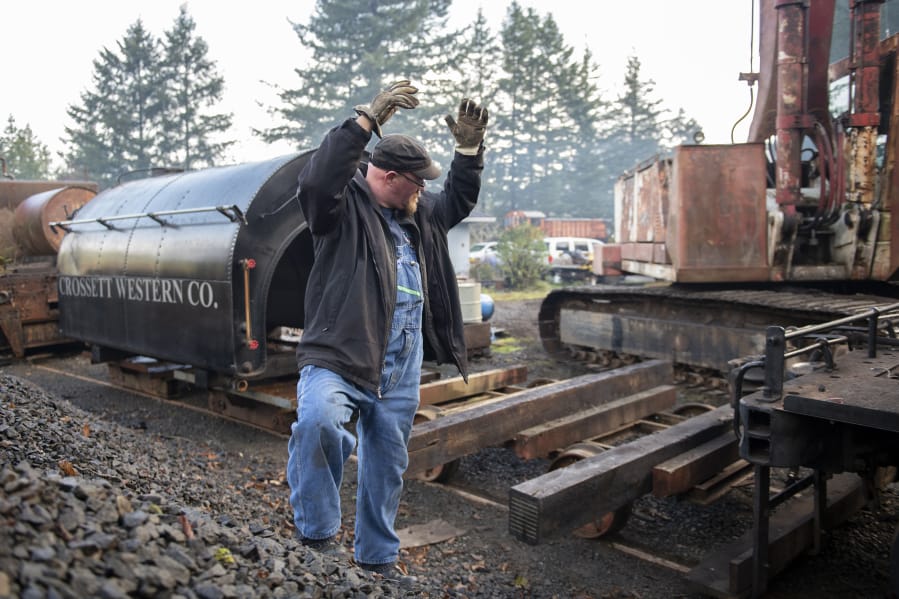Phone: 360-686-3559.
Online: www.bycx.com
Tax-deductible donations:
www.gofundme.com/f/bring-back-clark-county039s-steam-loco
Timeline
July 6, 1886: Vancouver businessman L.M. Hidden and five associates leave for a monthlong journey surveying a proposed rail route linking Vancouver to Yakima.
Sept. 22, 1887: The Clark County Register announces the incorporation of the Vancouver, Klickitat and Yakima rail line with $1 million in funding. The plan is to link Vancouver and Yakima via the Klickitat Pass.
Late 1880s: The rail line is built out as far as Brush Prairie before economic depression stops it.
Nov. 25, 1897:The company is sold to new owners and renamed the Portland, Vancouver and Yakima Railroad. The new owners haul 50,000 board feet of lumber from Brush Prairie to Vancouver every day.
September 1901: Four labor camps work to extend the rail line to Yacolt. Their labors include digging a 300-foot-long tunnel near Moulton Falls.
Summer 1902: An exceptionally dry summer leads to a numerous fires in Southwest Washington, collectively called the Yacolt Burn — even though the town of Yacolt is spared by shifting winds. Huge salvage operations managed by Weyerhaeuser occupy the forest, and the railway continues to lengthen.
1903: The line reaches Yacolt with daily passenger service as well as lumber-hauling, and the town booms. “Keep your eye on Yacolt and Battle Ground. Both of these little towns are now experiencing booms that are almost phenomenal. … The booms in both towns are occasioned by the increase in the logging business. The Columbia River Lumber Company have just established three camps on a spur near Battle Ground and in the Yacolt Country preparations are being made for an extensive logging business.” — The Vancouver Independent
1910-1920: The peak of salvage and green logging in the Yacolt area.
1929: Local logging operations cease. “Yacolt is absolutely dead with no promise for a future life,” writes the Weyerhaeuser general manager.
1940s: Northern Pacific runs small-scale logging operations on the line, but passenger service to Yacolt ends.
1948: New owner Harbor Plywood finally completes the extension from Yacolt to Chelatchie Prairie.
1960: New owner International Paper Company builds a big lumber and plywood plant in Chelatchie Prairie.
1979: The mill closes and the entire rail line goes up for sale.
1981: Three Vancouver businessmen buy the line and rename it the Chelatchie Prairie Railroad. It serves both commercial and passenger traffic until the three decide to sell it off.
1984: Clark County purchases the railroad and leases it to the Lewis and Clark Railroad for both tourist and commercial runs, but use is intermittent.
2001: Volunteers restore the Chelatchie Prairie Railroad and start running tourist excursions between Yacolt and Moulton Falls.




